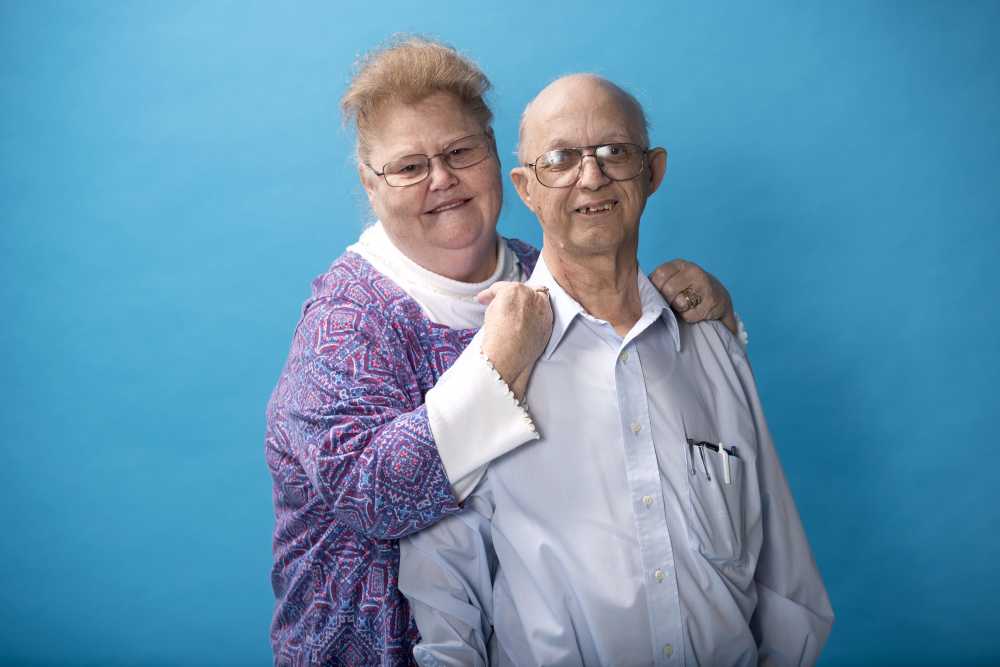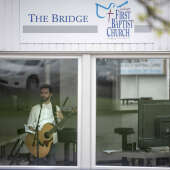Thankful People: 'Miracle Man' gets back to life with new heart procedure
Wednesday, November 21, 2018 ~ Updated 6:25 PM

On Aug. 14, the day he was due to have a life-changing surgery, Lee Roy Kent was ready to back out.
The surgery, a transcarotid transcatheter aortic valve replacement, was as new as its name was intimidating. It had never been done before in a Southeast Missouri hospital. Between his nerves and the risk involved, 68-year-old Kent was afraid he wouldn't make it through the procedure.
So much so, in fact, he had quietly gotten his affairs in order in preparation for a bad outcome.
But due to his existing conditions, the surgery was his only chance.
He was born with a chest wall deformity called pectus carinatum, or "pigeon chest," that made his breastbone protrude. He has a small figure, and Lee said he has never weighed more than 110 pounds. Because of his condition, Lee's childhood doctors told him he would never be able to work.
But that didn't stop him from becoming a songwriter, spending 42 years as an amateur radio host, or becoming an ordained minister in the United Pentecostal Church at the age of 48. He calls them hobbies, but they are as serious to him as any career.
"If you sat down and wrote a book about me, you'd be surprised by the things I've done, born with a heart condition," Lee said. "I've always kept myself busy."
His wife said there's nothing Lee won't try if he thinks he can accomplish it.
"I'm a daredevil, I guess you could say," Lee said with a laugh.
Lee's doctors first diagnosed him with severe aortic stenosis in February. It's a condition in which the aortic valve is calcified and doesn't open as easily as it should, which in turn limits the flow of blood from the heart to the rest of the body. The standard way to perform an aortic valve replacement, according to Lee's team of doctors, is through open-heart surgery. But because of his congenital deformity, an open-heart approach was off the table.
With circumstances like his, it took a team of doctors at Saint Francis Medical Center about a week of planning to find the answer to Lee's emergent condition. The answer they found gave Lee a second chance at life.
His team included Steven Joggerst, head of Saint Francis Medical Center's Structural Heart Program; William LaFoe, his primary cardiologist; and Chad Stasik, the surgeon who performed the carotid approach. Also on his care team were nurses Jennifer Cotner, structural heart coordinator, and Amy Drury, of the structural heart team.
Marsha said they could not have asked for a better team of doctors and nurses caring for Lee through this nerve-wracking procedure.
"They really make you feel like you're the only patient they have," Marsha said.
On Aug. 14, Lee's doctors used his carotid artery as the vessel by which to implement his new heart valve. Using the carotid artery was a calculated risk, as it had a potentially increased risk of stroke, but it was one of Lee's only options. It was a risk they had to take.
Cotner said the biggest concern his care team had post surgery was whether Lee would have a stroke.
"We would think the stroke risk is a little bit higher [placing the new valve] through the carotid as a reason not to use it routinely," LaFoe said.
The surgery was just over an hour long and successful, LaFoe said, making Lee the first person in the area to successfully undergo the transcarotid approach.
LaFoe said recovery time for the standard approach, open heart surgery, would normally take two to three months. Lee walked out of the hospital Aug. 15, the very next day.
"Dr. Joggerst says I'm the 'miracle man,'" Lee said. "But we believe in miracles."
Both Lee and Marsha credit the success of the surgery to the doctors and health professionals in his corner. But they also believe in healing through their faith, the cornerstone of their lives.
"We know, without a doubt, God is the one that put things together as He did," Marsha said. "He's the one who brought [Lee] here."
Now, Lee said the surgery has made a big difference in his breathing, and he even walks 1 to 2 miles a day.
Cotner, who introduced the Transcatheter Aortic Valve Replacement (TAVR) program to Saint Francis, said a successful surgery is a huge development for the hospital.
"We are excited to know we can now offer this option to our patients," Cotner said.
The TAVR approach has been a nice option for many patients to get new valves "fairly safely and easily" and without opening the chest, LaFoe said.
"The technology has really changed the scope of people's lives," Joggerst said.
The miracle man has been through a lot over his six decades of life, but the love of his marriage has helped keep him strong.
He met his wife, Marsha, in his 40s, after he took out a classified advertisement in a regional newspaper, detailing the traits of the type of woman he was looking for. Marsha responded, the two had their first date and were engaged just two weeks later.
"I always thought love at first sight was the stupidest thing I'd ever heard of," Marsha said. Meeting Lee changed her tune.
Now, the couple said they never leave each others' side.
Marsha has to have open-heart surgery herself in the near future, something the Kents are having a hard time wrapping their minds around so soon after Lee's surgery.
"If it was for me, I wouldn't have it done. I've been through too much," Marsha said. "But I'm doing it for him, because who's going to be there for him if I'm not? And that's the way [Lee] is with me."
For the Kents, family and faith are essential to a good life together. They even have a hard time keeping track of how many "greats" they are to their family.
With so much to live for, it seems Lee and Marsha Kent could take on anything life throws their way.
"If I had to do it all over again, I'd do it with you," Marsha said.































